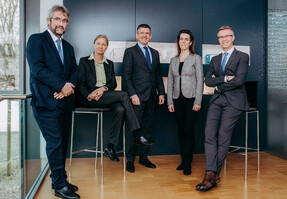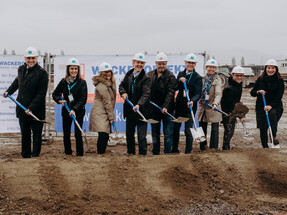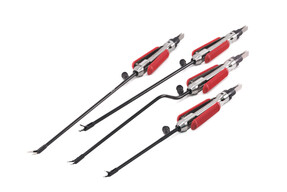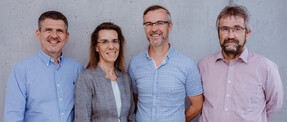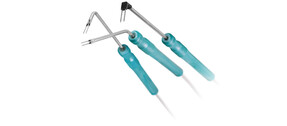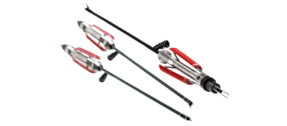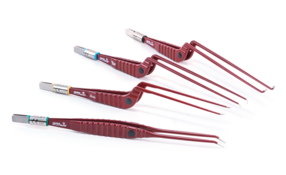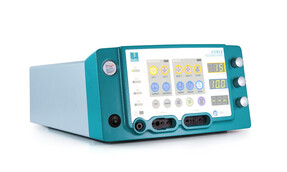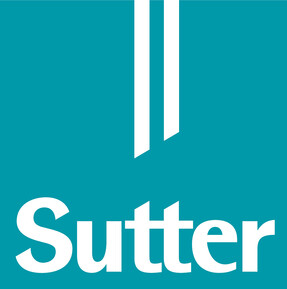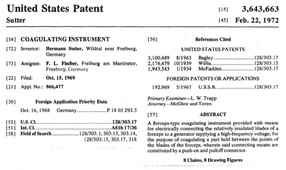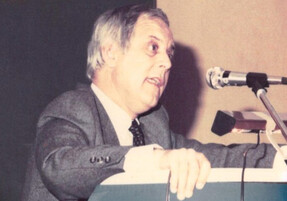Our Company History
Our history begins in 1970
The seeds for our business as we know it today, however, were planted by Hermann Sutter in the years before: In 1967, he developed the first bipolar forceps in Europe, together with his former employer and in close cooperation with Prof. Gazi Yasargil who was later honored as “Neurosurgery’s Man of the Century”. Our long history as a manufacturer of electrosurgical products and our early years as a distribution company are deeply engraved in our DNA.
Today, Sutter is known as one of the market leaders for non-stick bipolar forceps and radiofrequency systems for precision electrosurgery. With more than 35 active patents, we strive to provide innovative solutions for our customers.
Learn more about our history by scrolling through our timeline of company milestones below.
Highlights
-
Opening of our new headquarters in Emmendingen
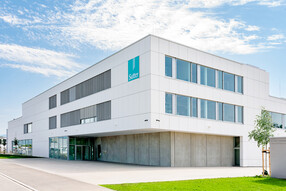
Since July 1, 2022, more than 170 employees have been working together in a state-of-the-art building complex on almost 9,000 square meters of floor space to achieve our vision: to offer optimal solutions for the work of physicians around the world.
-
NEW: Swyng® non-stick Bipolar Forceps, single-use
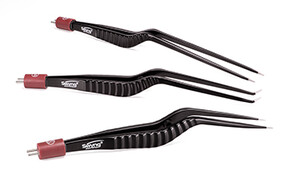
We are excited to launch our new disposable non-stick bipolar forceps product line for the international market: The Swyng® non-stick bipolar forceps, single-use combine high quality with innovative design. Available with straight and angled tip styles, the Swyng non-stick bipolar forceps, single-use, offer precision and versatility for different applications in the OR.
-
Product Launch: ARROWtip™ Monopolar Microdissection Electrodes, single-use
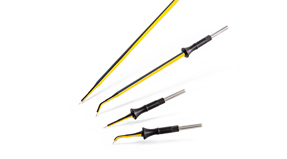
With their heat resistant, ultra-sharp tip design, the ARROWtip monopolar microdissection electrodes, single-use provide precision for cutting, tissue dissection and coagulation. Sutter offers a range of different models to meet your needs for a variety of applications.
-
We are launching our new disposable non-stick bipolar forceps product line in the USA – designed and manufactured in Germany. The Swyng non-stick bipolar forceps offer precision and versatility in the operating room with a wide range of available models.
-
Sutter is breaking ground in Emmendingen
The construction of our new headquarters in Emmendingen begins with the ground breaking ceremony on March 5, 2020.
-
Product line extension: Calvian endo-pen®
-
Product launch: RaVoR™
Product launch of the RaVoR™ bipolar electrodes, single-use.
-
Foundation of Sutter USA
Sutter Medical Technologies USA is founded with an office in Atlanta, GA/USA.
-
Company expansion
Two more buildings are added. The number of employees rises to approximately 100.
-
Medal for Merit
Sutter is awarded the Medal for Merit by the German Society of Oto-Rhino-Laryngology, Head and Neck Surgery.
-
Acquisitions
Acquisition of Fentex Medical and Rhinolab.
-
Company expansion
A new building with an ultra-modern coating facility is constructed.
-
Product line extension: SuperGliss® non-stick zhora
Introduction of the SuperGliss® non-stick zhora bipolar forceps.
-
New representative office
Opening of our representative office in Shenzhen/China.
-
Product line extension: SuperGliss® non-stick TEO
Our cooperation with Australian neurosurgeon Charlie Teo, M.D. leads to an extension of the SuperGliss® non-stick bipolar forceps range with the introduction of the SuperGliss® nonstick TEO bipolar forceps.
-
Foundation of Sutter Pacific
Sutter Pacific is founded with the opening of our distribution office in Hong Kong.
-
Product line extension: SuperGliss® non-stick ELP
Addition of the SuperGliss® non-stick ELP product line.
-
Product launch: Calvian®
Offering a solution for bipolar coagulation in narrow spaces with the Calvian® bipolar clamp, e. g. during sinus surgery.
-
Product launch: non-stick monopolar suction tube
The non-stick monopolar suction sube is introduced into the market.
-
Renovations
The extensive renovation of two of our three buildings is concluded: that means our energy efficiency is 20% better than the German standard for low power consumption. Photovoltaic cells with 24kWp generate approximately 20.000 kWp clean energy per year.
-
Product launch: To-BiTE™
The To-BiTE™ bipolar clamp is introduced: Four functions are combined in one instrument – suction, coagulation, dissection, and grasping – for bipolar tonsillectomy.
-
Innovation: non-stick technology
In a successful cooperation with Silverglide Surgical Technologies, Sutter manufactures the first non-stick bipolar forceps.
-
Product launch: RaVoR™
Market launch of the RaVoR™ system based on the BM-780 II radiofrequency technology for the treatment of habitual snoring and mild OSAS.
-
Bert Sutter joins the company
Bert Sutter joins the family business.
-
100 % Sutter
The Sutter family takes over 100 % of the company shares, the company name is being changed to “Select Medizin-Technik Hermann Sutter GmbH”.
-
Beginning of a new era
After moving the company to its new premises in Freiburg, the in-house development and production of electrosurgical instruments begins.

; height: auto; },
(min-width: 501px) { src: url(https://www.sutter-med.de/chameleon/mediapool/thumbs/0/eb/-14-Fertiges-Gebaeude-1988_800x557-ID4418-3d97f827c1b999cb05d97b91441cfa69.jpg); height: auto; },
(min-width: 801px) { src: url(https://www.sutter-med.de/chameleon/mediapool/thumbs/0/eb/-14-Fertiges-Gebaeude-1988_1200x836-ID4418-49d4b45428c6c03c7d4b443694916eeb.jpg); height: auto; }
)
; height: auto; },
(min-width: 501px) { src: url(https://www.sutter-med.de/chameleon/mediapool/thumbs/d/f7/Sutter-Medizintechnik-Emmendingen_800x534-ID6000-f6b36dc59331d4ea907bd5b19eafb287.jpg); height: auto; },
(min-width: 801px) { src: url(https://www.sutter-med.de/chameleon/mediapool/thumbs/d/f7/Sutter-Medizintechnik-Emmendingen_1200x801-ID6000-de21e2ef46118c6537c73204ce692ac6.jpg); height: auto; }
)
